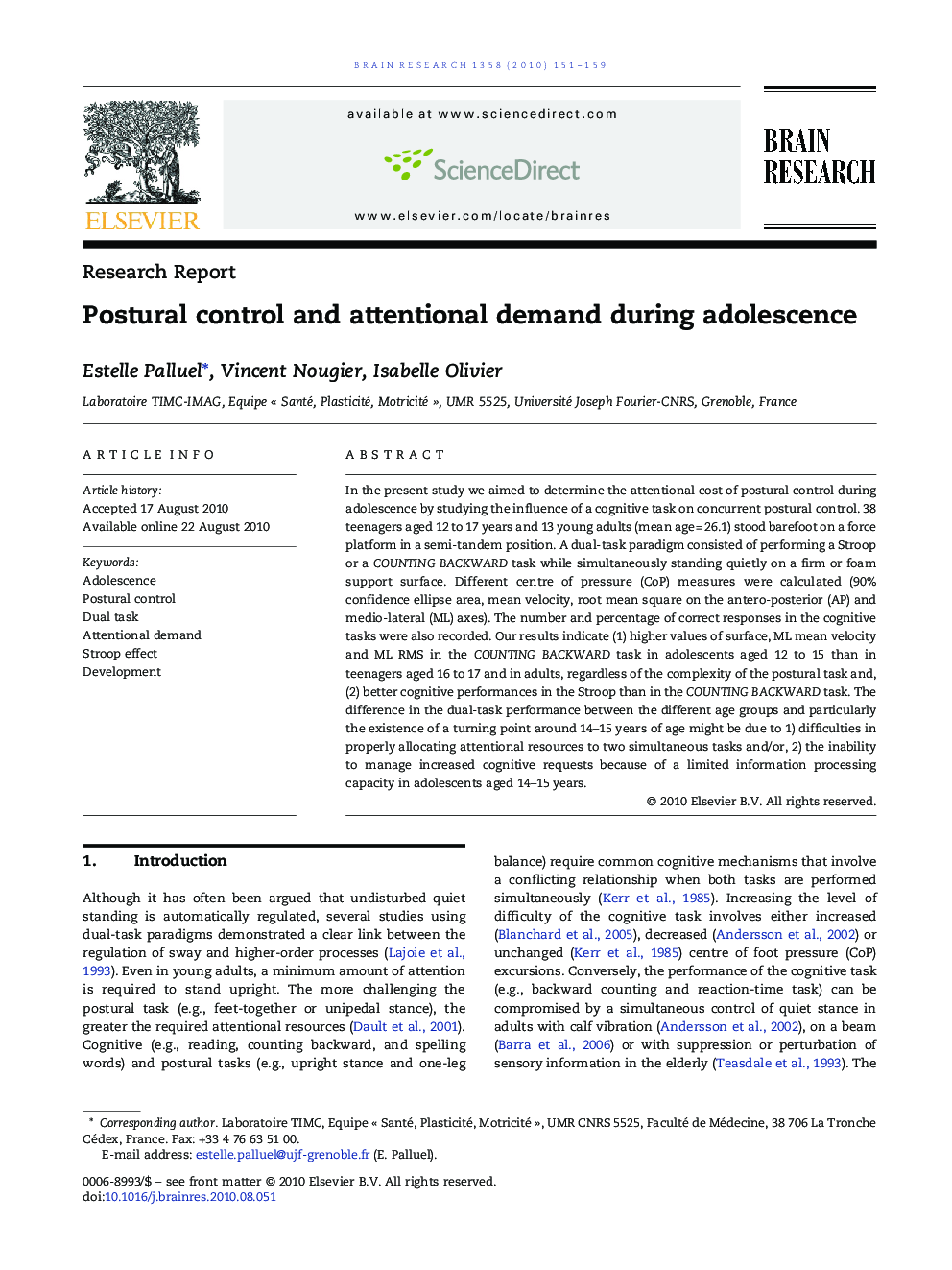| Article ID | Journal | Published Year | Pages | File Type |
|---|---|---|---|---|
| 6265445 | Brain Research | 2010 | 9 Pages |
In the present study we aimed to determine the attentional cost of postural control during adolescence by studying the influence of a cognitive task on concurrent postural control. 38 teenagers aged 12 to 17 years and 13 young adults (mean age = 26.1) stood barefoot on a force platform in a semi-tandem position. A dual-task paradigm consisted of performing a Stroop or a COUNTING BACKWARD task while simultaneously standing quietly on a firm or foam support surface. Different centre of pressure (CoP) measures were calculated (90% confidence ellipse area, mean velocity, root mean square on the antero-posterior (AP) and medio-lateral (ML) axes). The number and percentage of correct responses in the cognitive tasks were also recorded. Our results indicate (1) higher values of surface, ML mean velocity and ML RMS in the COUNTING BACKWARD task in adolescents aged 12 to 15 than in teenagers aged 16 to 17 and in adults, regardless of the complexity of the postural task and, (2) better cognitive performances in the Stroop than in the COUNTING BACKWARD task. The difference in the dual-task performance between the different age groups and particularly the existence of a turning point around 14-15 years of age might be due to 1) difficulties in properly allocating attentional resources to two simultaneous tasks and/or, 2) the inability to manage increased cognitive requests because of a limited information processing capacity in adolescents aged 14-15 years.
Research HighlightsâºTurning point in postural control around 14-15 years of age while performing a dual task. âºNo gender difference. âºIncreased difficulty of the postural task did not modify performances in the cognitive task.
